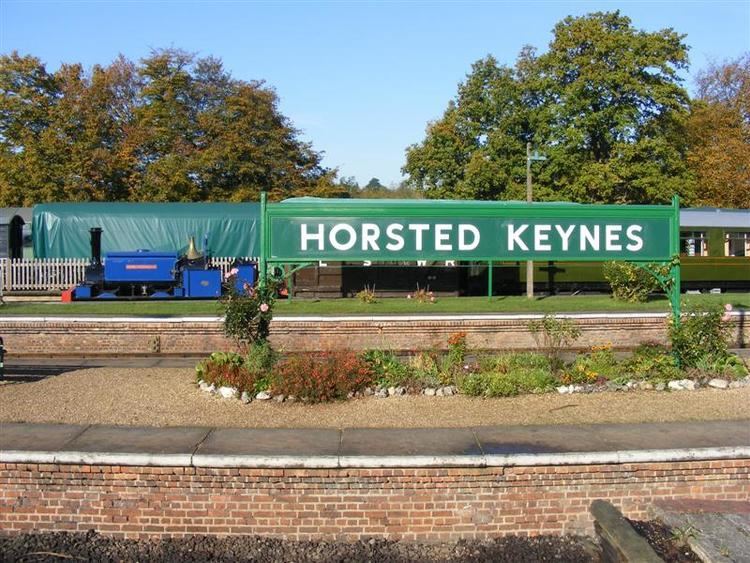Grid reference TQ370292 | ||
 | ||
Owned by Southern RailwaySouthern Region of British RailwaysBluebell Railway Platforms 5 (with tracks 1,2,3 and 4/5) Similar Bluebell Railway, Sheffield Park railway st, Kingscote railway station, East Grinstead railway st, Sheffield Park Garden | ||
Horsted Keynes railway station is a preserved railway station on the Bluebell Railway in Sussex. The station appears in several episodes of the television series Downton Abbey and also in Jeeves and Wooster.
Contents
History
The station was closed by British Railways under the Beeching Axe on 28 October 1963 with the cessation of trains from Seaford via Haywards Heath (trains over the Lewes to East Grinstead line having ceased in 1958). However, the first Bluebell Railway trains had run on the last day of the 1962 season using the disused eastern side (electrified services only used Platform 2). Between 1960 and 1962 Bluebell Railway services had terminated at Bluebell Halt - a temporary station about half mile to the south.
As a junction station it was the busiest station on the line in terms of services but arguably one of the quieter for passengers. The station lies about 1.5 mi (2.4 km) from the village of Horsted Keynes itself.
Since being taken over by the Bluebell the station has become one of the most popular stations in UK preservation, and has won many awards. It has been restored under a 1930s theme with period newspaper headlines on boards by the buffet and adverts of the period. With five platforms it is the largest preserved heritage railway station in the UK. It is the crossing place for services when two trains are operating and hosts many events each year for steam enthusiasts. It is also the home of the line's Carriage and Wagon department.
The Bluebell Railway plans to eventually make this station a junction once again if plans to extend toward Ardingly are realised, creating something rare within UK preservation, a junction station where both lines are operated by preservationists.
Listed buildings
The main station building, the signal box and an engine house to the south of the station are all Grade II Listed buildings. All three were originally built in or shortly after 1882 to the designs of Thomas Myres, the railway company's staff architect.
